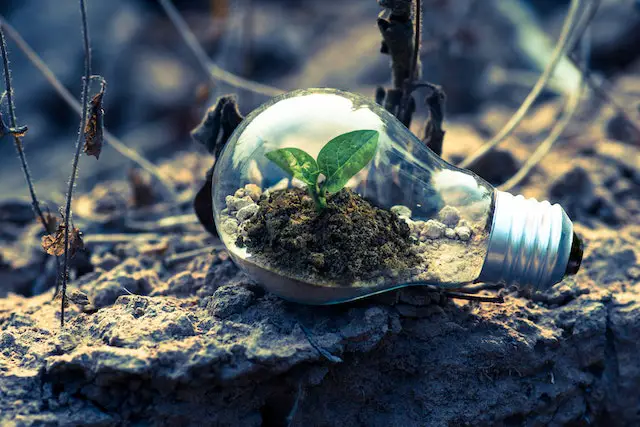Theme:
- In the quest for economic growth, countries have long relied on natural resources, which has led to environmental degradation and climate change. Green growth, however, offers an alternative approach that seeks to balance economic growth with environmental sustainability. Green growth was one of the seven primary objectives in the Union Budget 2023-24, ranging from green credits, green energy, green mobility, and green farming. Let us discuss the concept of green growth, its benefits, and its challenges.
What is green growth?
- Green growth is an approach to economic development that emphasizes the sustainable use of natural resources and the reduction of environmental pollution and greenhouse gas emissions. The aim is to promote economic development in a manner that does not jeopardize the capacity of future generations to fulfil their requirements. The green growth concept emphasizes the importance of improving resource efficiency, investing in renewable energy sources and promoting sustainable production and consumption patterns.
Benefits:
- Economic Growth: Green growth can lead to economic growth through the creation of new industries and jobs in the renewable energy and sustainable agriculture sectors. A shift towards sustainable economic activities will also reduce the cost of environmental degradation and healthcare.
- Environmental Protection: By reducing greenhouse gas emissions, green growth can mitigate climate change and protect the environment. It can also reduce pollution levels, improve air and water quality, and protect biodiversity.
- Social Equity: Green growth can promote social equity by creating job opportunities, particularly in rural areas, and improving access to basic services like clean water, sanitation, and energy. It can also improve the health and well-being of communities by reducing pollution levels.
Challenges:
- High Cost: The transition to a green economy requires significant investments in renewable energy, sustainable infrastructure, and green technologies. Developing countries may face financial challenges in making these investments.
- Political Will: Governments may lack the political will to implement green growth policies, especially if it means sacrificing short-term economic gains. Private sector interests may also resist changes to the status quo.
- Technological Obstacles: Green growth requires the development and adoption of new technologies that are currently not widely available. This can pose technological barriers to implementing green growth policies.
Promoting Green Growth:
- Tailoring Green Growth Strategies: To promote sustainable development, Green Growth strategies must be customized to suit specific country circumstances, encompassing social, economic, environmental, technological, financial, and development aspects in a comprehensive framework. Economic growth should not be at the expense of the environment, and therefore, it is essential to focus on balancing all these elements for sustainable development.
- Recognizing Natural Assets: While GDP is the main indicator used to measure economic progress, it should be noted that natural assets, such as forests, water resources, and biodiversity, provide critical ecosystem services that support human life and economic activities. Therefore, the Green Growth strategy must recognize the contribution of natural assets to sustainable development and their importance to society’s well-being, health, and wealth.
- Promote Sustainable Consumption: Encourage sustainable consumption patterns, such as buying locally produced goods, reducing food waste, and using public transportation.
- Investing in Long-Term Environmental Sustainability: Investing in renewable energy and green technologies is an effective way to foster Green Growth. Long-term investments in environmental sustainability can promote economic resilience, diversify the economy, and enhance the relationship between the environment and the economy. Therefore, the Green Growth strategy should prioritize investments in sustainability to drive economic growth while advancing environmental sustainability.
- Develop Sustainable Infrastructure: Develop sustainable infrastructure that supports sustainable transportation, such as bike lanes, public transportation systems, and electric vehicle charging stations.
- Support Green Innovation: Support green innovation and research and development to drive technological advancements that support green growth.
- Promote Sustainable Production: Encourage sustainable production practices, such as resource efficiency, waste reduction, and the use of renewable energy sources.
Conclusion:
Green growth is a strategy for achieving sustainable development that requires a shift in the way we produce and consume goods and services. It requires the promotion of sustainable production and consumption practices, investment in renewable energy, and the development of sustainable infrastructure. The key to success is to establish a policy framework that promotes green growth, create incentives for businesses and individuals to adopt sustainable practices, engage stakeholders, build capacity, and monitor and evaluate progress. By implementing a strategy for green growth, we can move towards a more sustainable future.
Photo by Singkham
Your Turn…
What’s your take on Green growth? Express your point of view in the comment section below. And subscribe to our blog to read answers to the trending GD topics.
Copyright @ Group Discussion Ideas.









1 Comment